Timing is critical to successful sowing. We have compiled for you what needs to be sown and when.

Harvesting fresh vegetables from the garden all year round has become the ideal. But the variety of species and their different optimal cultivation times make gardening a masterpiece of organization. The right time for the sowing of our vegetable plants determines when we be able to harvest, whether the vegetables in our latitudes really ripen properly and, last but not least, about the Quality. While some plants require extremely long development periods, others tend to bud prematurely in summer, such as the Chinese cabbage. But keeping track of all plants and their sowing dates is easier said than done. A sowing calendar that shows at a glance which types of vegetables need to be sown can help.
The gardener's work knows no breaks, because a wide variety of vegetables can be grown or sown directly at any time of the year. The planning for this often takes more time than the sowing itself. In our sowing calendar you can find out when which species are best sown and brought forward.
contents
- Sowing calendar for January
- Sowing calendar for February
- Sowing calendar for March
- Sowing calendar for April
- Sowing calendar for May
- Sowing calendar for June
- Sowing calendar for July
- Sowing calendar for August
- Sowing calendar for September
- Sowing calendar for October
- Sowing calendar for November
- Sowing calendar for December
Sowing calendar for January
Cold-tolerant vegetables can be sown in the greenhouse as early as the first month of the year. Of course, the growth rate cannot be compared to sowing in warmer weather, but it is still worth greening the greenhouse - both for the soil and for the plate. The garden year can also start on the windowsill.

Sow in cold frames and greenhouses: All year round offers the Lamb's lettuce (Valerianellalocusta) as a particularly robust and vigorous leafy vegetable. Under glass thrive in winter too spinach (Spinaciaoleracea), winter cress (Barbareavulgaris) and winter purslane (Claytonia perfoliata). Some lettuce varieties are so frost-tolerant that they can be sown in an unheated greenhouse from mid-January.
Tip: The germination of the vegetables mentioned takes much longer in the cold - you have to wait three to four weeks for a seedling.
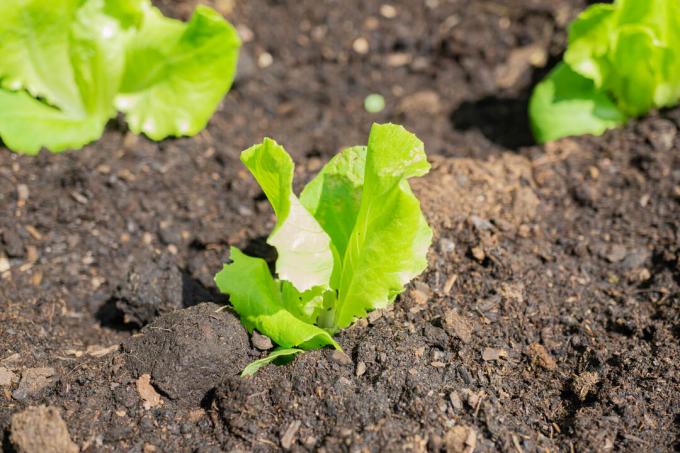
preculture: Salads like ‘Lollo Rosso’, ‘Lollo Biondo’ (Lactuca sativa var. crispa) or lettuce (Lactuca sativa var. capitata) are already brought forward on the windowsill from the end of January, and then migrate to the greenhouse from the beginning of March. Even Kohlrabi (Brassica oleracea var. gongylodes) can be sown as early as mid-January to grow young plants indoors.
radish and radishes (Raphanus sativus) are already going straight into the January cold frame or greenhouse sown.
Tip: sprouts from cress (Lepidium sativum) and arugula (Erucasativa) as well as others microgreens are in season in the kitchen all year round and offer healthy and varied food all year round.

Summary of the January sowing calendar:
- In the greenhouse: winter purslane, winter cress, lamb's lettuce, spinach, lettuce, radishes, radish
- On the windowsill: salads, kohlrabi
Sowing calendar for February
The season of slow-growing fruit vegetables starts in February - after all, they need enough time to ripen.
Sowing in the cold frame and greenhouse: Furthermore, leafy greens such as spinach can be sown in batches in the greenhouse and harvested continuously. From the end of February endives (Cichorium endivia), romaine lettuce (Lactuca sativa var. longifolia), iceberg lettuce (Lactuca sativa) and seed onions (Alliumcepa) sown in the greenhouse. Germination sometimes takes a long time at low temperatures, but can be accelerated with the help of covers such as fleece or mulch materials.
Sowing outdoors: radish, radish and the broad bean (Vicia faba) can be sown outdoors once the ground is open. Even light frosts do not bother them.
preculture: If you have a warm greenhouse, you can start pre-cultivating from mid-February eggplant (solanummelongena), paprika and chillies (capsicum sp.) begin. If you later want to simply place the plants in the bed, it is better not to start until the end of February or the beginning of March - otherwise the young plants will become overgrown before they are planted outdoors. The long culture of artichokes (Cynara scolymus) also makes early pre-cultivation mandatory from mid-February. Early varieties of head cabbages (Brassica oleracea ssp.) can now be brought forward. For summer leeks, which are to be planted in April, leeks are already being sown (Allium ampeloprasum ssp. apeloprasum).
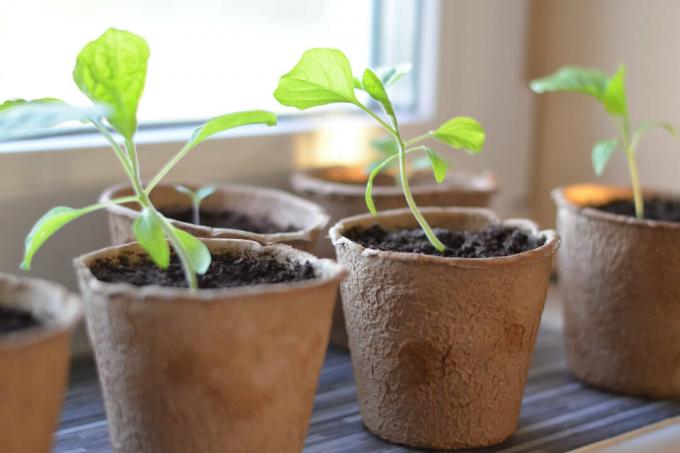
Summary sowing calendar February:
- In the greenhouse: lettuce, endives, seed onions, spinach, radishes, winter cress, winter purslane
- Outdoors: radishes, radishes, broad beans
- On the window sill: eggplant, chili, pepper, artichoke, leek
Sowing calendar for March
March is the harbinger of spring - now a lot can already be sown directly into the bed.
preculture: Now it's time Andean berries (Physalis peruviana) and tomatillo (Physalis ixocarpa) and to grow small plants on the window sill. Early varieties of cabbage and cauliflower (Brassica oleracea ssp. botrytis) and broccoli (Brassica oleracea ssp. Italica) are now sown for greenhouse cultivation. On the windowsill or in the greenhouse can now also fennel (Foeniculum vulgare), celery root (Apiumgraveolens var. rapaceum), vegetable artichoke (Cynara cardunculus), New Zealand spinach (Tetragoniatetragonioides) and Swiss chard (Beta vulgaris subsp. vulgaris) are preferred. Also the Tigernut (Cyprusesculentus) can be grown into strong young plants from March, which can then go outdoors from mid-May. However, the "sowing" does not take place with seeds, but by means of the small root rhizomes.

Sowing outdoors: The first root vegetables such as parsnips (pastinacasativa), parsley roots (petroleumcrispum subsp. tuberosum), oat roots (Tragopogon porrifolius), salsify (Scorzonera sp.) and carrots (daucuscarota) sown. Good neighbors to the umbelliferous plants carrots, parsnips and parsley roots are also sown in March spring onions (Allium fistulosum), leek (Allium porrum) and seed onions. The more robust legumes such as peas (Pisumsativa) and broad bean (Vicia faba) thrive wonderfully in beds from March. radish (Raphanus sativus var. sativus) have the main sowing season from the middle of the month to the beginning of September: If you sow weekly, you can harvest continuously. For leafy greens like salads, lamb's lettuce and the garden orchard (Atriplexhydrangea) sowing outdoors takes place until the beginning of September. Onions can be sown directly into the bed or planted at the end of the month - the same goes for garlic cloves.
Tip: For many hobby gardeners, it seems desirable to sow the beloved tomato plants at the end of February or beginning of March - at least earlier than the neighbor does. Don't get involved in this competition. Tomato plants sown too early become long, thin and unstable due to a lack of light – and are also susceptible to disease. Sowing seeds in early April is more than early enough.
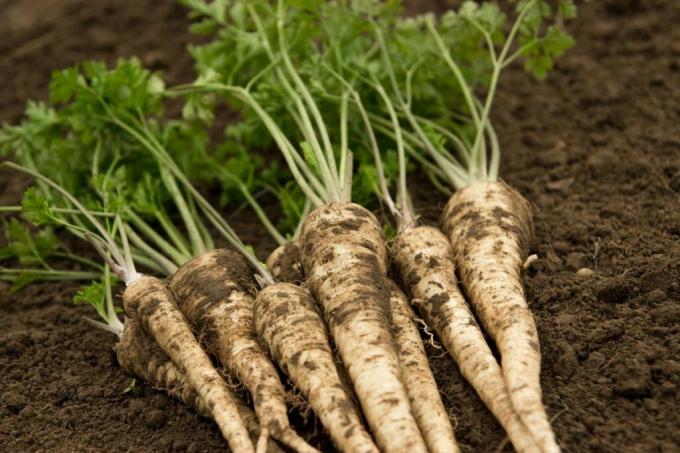
Summary sowing calendar March:
- On the window sill: tomatillo, Andean berry, artichoke, tiger nut, cabbage, cauliflower, broccoli, fennel, chard
- Outdoors: carrots, parsnips, root parsley, oat root, black salsify, seed onions, spring onions, leeks, peas, Broad beans, radishes, lamb's lettuce, salads, orache, turnips, onion seeds and onion sets, garlic onions, leek
- In the greenhouse: cabbage, cauliflower, broccoli, fennel, celeriac, chard, New Zealand spinach
Tip: If vegetable plants are pre-cultivated, it is best to use a nutrient-poor soil. One such example is ours Plantura Organic Herb & Seed Soil. It is not only peat-free, which sets it apart from other seed soils, but also particularly loose due to coarse perlite. Experiments have shown that the better a seedling's roots are aerated, the better they can develop. Incidentally, the low level of pre-fertilization causes the roots to spread further while they grow Look for nutrient reserves - this gives the young plants the best starting conditions in the bed or Glasshouse.
Sowing calendar for April
The sowing of the pumpkin plants begins in April:
preculture: On the warm window sill are allowed now melons (Cucumismelo), cucumbers (Cucumissativus), pumpkins (Cucurbita sp.) and zucchini (Cucurbitapepo subsp. pepo) germinate. Also vegetable or popcorn corn (Zeamays) are happy about the pre-cultivation in the house, as well as runner beans (phaseolusvulgaris) and the heat-loving Nasturtium (tropaeolum spec.). Brussels sprouts (Brassica oleracea var. gemifera) is now also pre-cultivated in order to be planted out in June at the earliest. Tomatoes (Solanum lycopersicum) are grown into strong young plants and planted out in mid-May. Cucumbers can now be preferred.
Seed outdoors: the Beetroot (betavulgaris) and chard can be sown directly into the bed from the middle of the month. Lettuce, rocket and Asian salads are also sown from time to time in order to always have supplies. Sugar peas and wrinkled peas are now laid outdoors. savoy cabbage (Brassica oleracea ssp. oleracea convar. capitata var. sabauda) is sown directly into the bed. the turnip (Brassicarapa subsp. rapa var. majalis) is sown – contrary to its name – from the beginning of April to July. Onions can be sown until the end of the month, onion sets are also planted, as is garlic (Allium sativum). If you still sow leeks at the beginning of April, you can harvest them as winter leeks.

Summary sowing calendar April:
- On the window sill: melon, cucumber, squash, zucchini, corn, runner beans, nasturtium, Brussels sprouts, tomatoes, cucumbers
- Outdoors: beetroot, turnips, all kinds of salads, radishes, peas, turnips, onion seeds and onion sets, garlic cloves, chard, leeks
tip: Also a phenological calendar helps to find the right time to sow your vegetables. You can find out exactly how this works in our special article.
Sowing calendar for May
The beautiful month of May should be used to sow vegetables that will be harvested late in the fall and into the winter.
seed in the field: The turnip (Brassica napus subsp. rapifera) is sown directly into the bed from mid-May after the last frosts, as is the runner bean (Phaseolus coccineus) as well as bush and pole beans. As a leafy vegetable, you can sow Asian salads and wild lettuce such as summer purslane (Purslaneoleracea var. sativa), which are then harvested until autumn. Fennel is sown outdoors. Red cabbage and white cabbage are now sown directly into the bed, as are cucumbers (Cucumis sativus). Potatoes (Solanum tuberosum) is now placed. Sow parsnips and chard in the bed to conjure up delicious stir-fries later.
preculture: The palm cabbage (Brassica oleracea var. palmifolia), also called kale, is now sown in order to plant it out in June or July.

Summary sowing calendar May:
- Outdoors: Rutabaga, French beans, runner beans, runner beans, summer purslane, lettuce, fennel, cucumber, tomatoes, potatoes, turnips, parsnips, Swiss chard
- On the windowsill: kale
tip: A sufficient supply of nutrients is important for aromatic vegetables. For this reason, a dose of primarily organic long-term fertilizers should be incorporated when planting heavy-duty vegetable plants. Our Plantura organic tomato fertilizer is perfectly tailored to the needs of vegetables and also protects the environment.
Sowing calendar for June
Sowing outdoors: In June, lettuce crops are sown that do not tend to bloom despite the warmth, such as sugarloaf and radicchio, both subspecies of chicory (Cichorium intybus var. foliosum). Also cabbages like Pak choi (Brassica rapa subsp. chinensis) and autumn varieties of cauliflower are sown directly into the bed in June. There is still time in summer for the following crops of radishes, lettuce and carrots. Sowing is now also taking place for fennel and parsnips. Chinese cabbage, pak choi (Brassica rapa ssp. pikinensis / chinensis) and turnips (Brassicarapa ssp. rapa) are sown, just like Swiss chard.
Sowing in the greenhouse: If there is still space in the greenhouse, tomatoes and cucumbers (Cucumis sativus) can be sown directly.

Summary sowing calendar June:
- Outdoors: sugar loaf, radicchio, pak choi, autumn varieties of cauliflower, radishes, lettuce, carrots, fennel, cucumber, tomato, turnips, parsnips, Chinese cabbage, pak choi
Sowing calendar for July
When sowing in the high summer month of July, the focus is already on the approaching autumn.
Sowing outdoors: Autumn and winter radishes such as the black radish (Raphanus sativus var. Niger) and the winter hedge onion should now have a place in the bed. Also the Chinese cabbage (Brassica rapa subsp. pekinensis) can now be sown directly outdoors. Late sowing of carrots ensures a harvest of the same in autumn and winter. Now is also the best time to eat the delicious autumn turnips (Brassicarapa ssp. rapa) to sow, which are needed for winter stews. Chinese cabbage and pak choi as a summer crop are also sown.
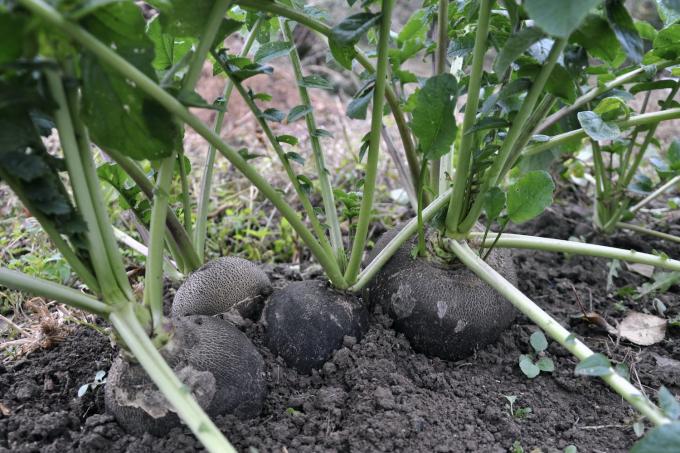
Summary sowing calendar July:
- Outdoors: autumn and winter radishes, winter onions, Chinese cabbage, lettuce, radishes, carrots, autumn turnips/turnips, Chinese cabbage, pak choi
Sowing calendar for August
Like July, August with its decreasing day length is ideal for budding autumn crops such as winter hedge onions, winter radishes and Chinese cabbage. Vegetables grown in sets like lamb's lettuce and radishes are still in season. Autumn turnips should now be sown quickly in the bed. Swiss chard, which is now sown, overwinters in the bed and is not harvested until spring.

Summary sowing calendar August:
- Outdoors: lamb's lettuce, autumn and winter radishes, winter hedge onions, Chinese cabbage, lettuce, radishes, autumn turnips, chard
Sowing calendar for September
In September, the greenhouse for crop extension gains importance again:
Sowing outdoors: The last batches of spinach, lettuce, lamb's lettuce and radishes as well as winter purslane and winter cress are now finding their way into the bed, as are the winter hedge onions and mustard (Sinapis spec.). Now at the latest, harvested areas are covered with green manure. Mustard, winter rape (Brassica napus) or lamb's lettuce. Black salsify and chard can also be sown until mid-September and survive the winter as young plants.
Sowing in the greenhouse: Now sown, fast-growing and frost-tolerant radishes, pick and cut lettuce as well as Asian lettuce will be ready to harvest in the greenhouse or cold frame before winter.
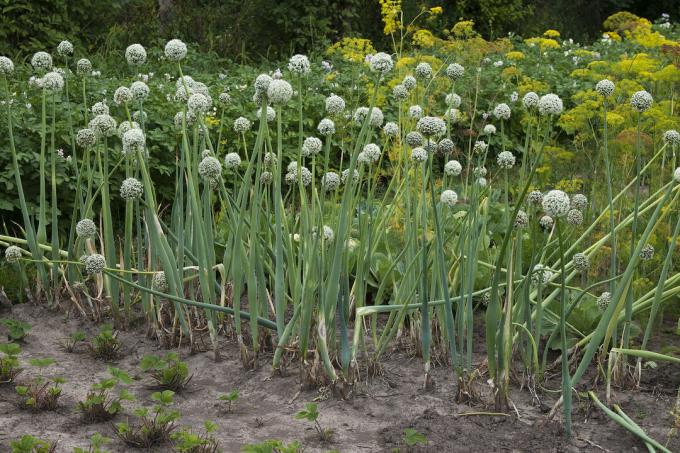
Summary sowing calendar September:
- Outdoors: winter hedge onions, mustard, lettuce, radishes, green manure, winter lettuce, spinach, black salsify, chard
- In the greenhouse and cold frame: lettuce, radishes, lamb's lettuce for the winter harvest and for ground cover
Sowing calendar for October
In the greenhouse there is finally space again for overwintering leafy vegetables such as spinach, lamb's lettuce and winter purslane. Leaf and lettuce can also be sown in the greenhouse in October. Outdoors, fallow areas can be planted with winter greenery that can remain in place until spring. Robust Asian salads and mustard leaves like Mizuna (Brassicarapa var. japonica) can also go outside. They are far more cold tolerant than one would assume and are even allowed to overwinter outdoors. Garlic can now be planted as cloves or bulbous bulbs for sprouting in the spring.
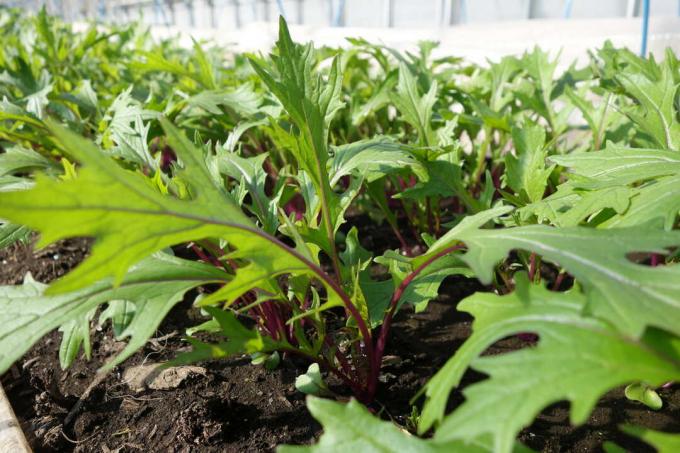
Summary sowing calendar October:
- Put outdoors: Asian salads, leaf mustard, winter greens, garlic cloves
- In the greenhouse: lettuce, spinach, lamb's lettuce, winter purslane
Sowing calendar for November
The approaching winter and the reduced daylight are suitable for sowing crops that should not germinate until next spring. Plants that do not sprout until next spring are now sown in the bed, for example the chervil beet (Chaerophyllum bulbosum), parsnips, early carrots or root parsley. The well-known winter crops and Asian cut lettuce can still be sown in the greenhouse.
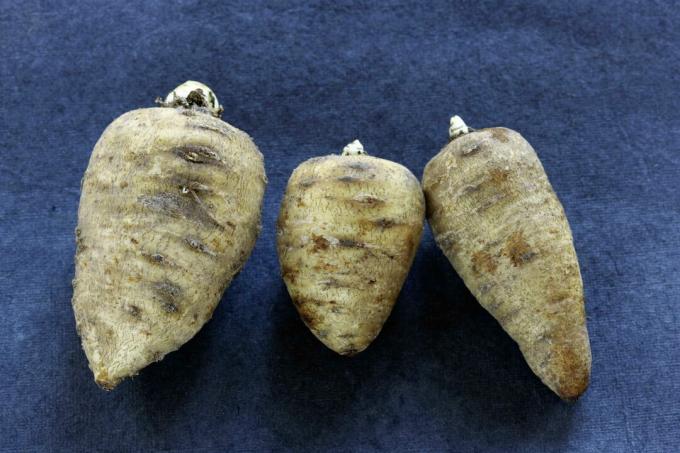
Summary sowing calendar November:
- Outdoors: chervil beets, parsnips, early carrots, root parsley
- In the greenhouse: winter purslane, lamb's lettuce, spinach, Asian salads, leaf mustard
Sowing calendar for December
As the darkest month of the year, December is only suitable for sowing winter purslane and lamb's lettuce in the greenhouse. Both crops take quite a long time to germinate, but can be harvested from February if the weather is frost-free. The cress and others microgreens on the windowsill bridge the cold time very well, just like the vegetables that you may have canned or stored.
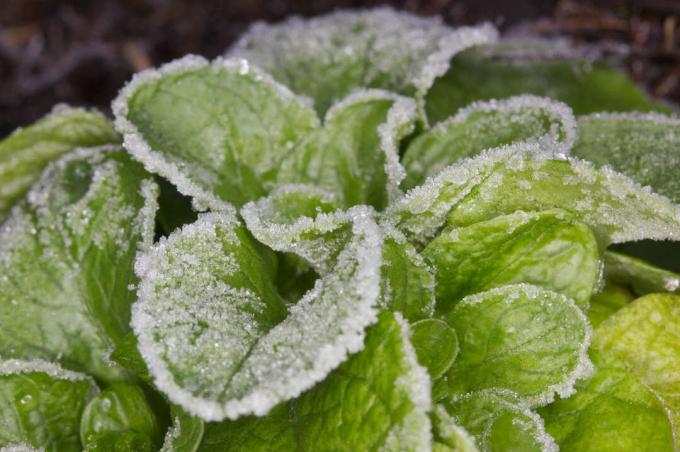
Summary sowing calendar December:
- In the greenhouse: winter purslane, lamb's lettuce
- On the windowsill: cress, sprouts, microgreens
If, in addition to sowing seeds, you also want to adjust your diet to the season, you will find ours here Plantura seasonal calendar. The perpetual and decorative annual calendar shows each month which fruits and vegetables are currently available seasonally and regionally. This makes it a practical shopping aid for more sustainability in everyday life.
